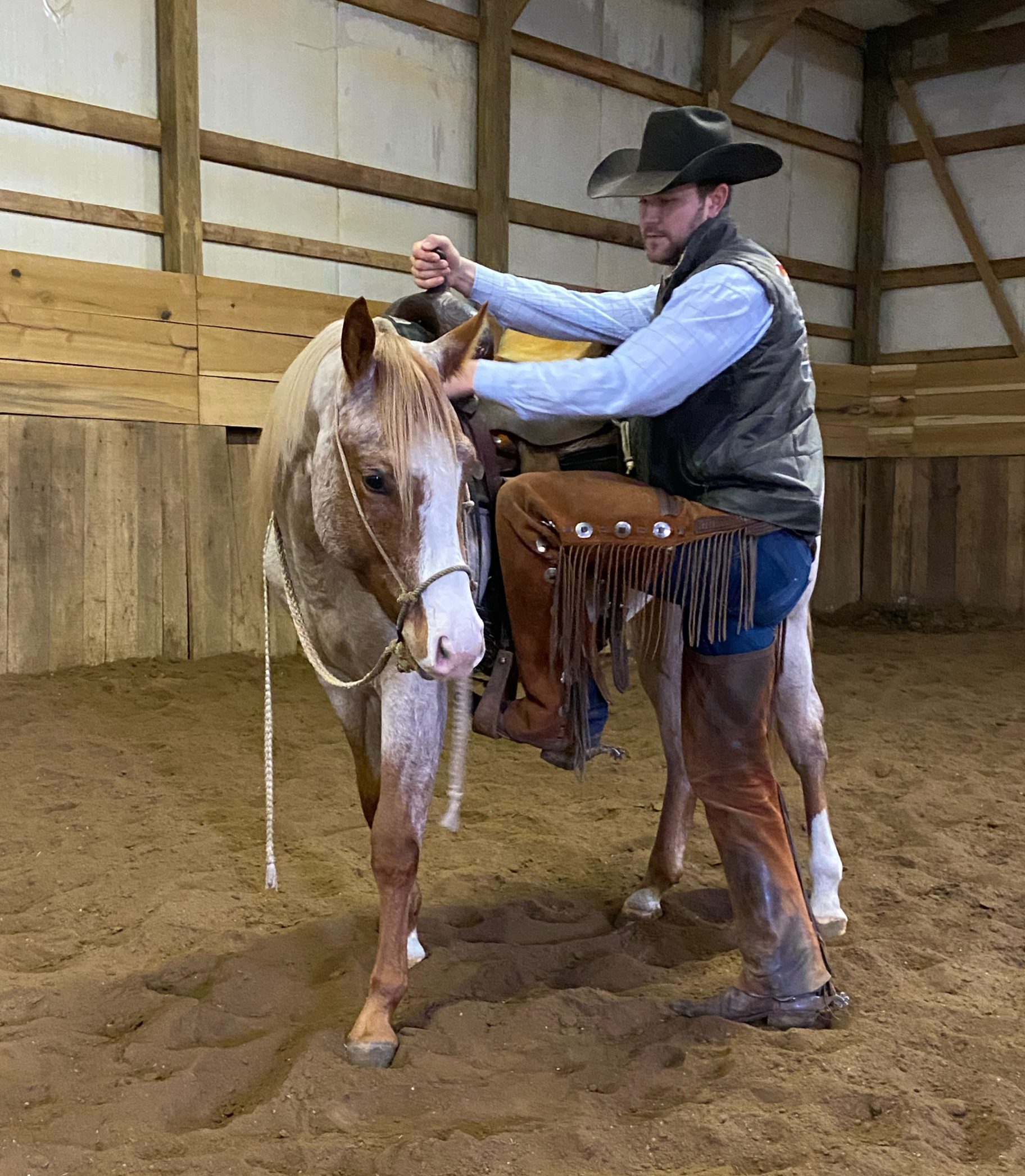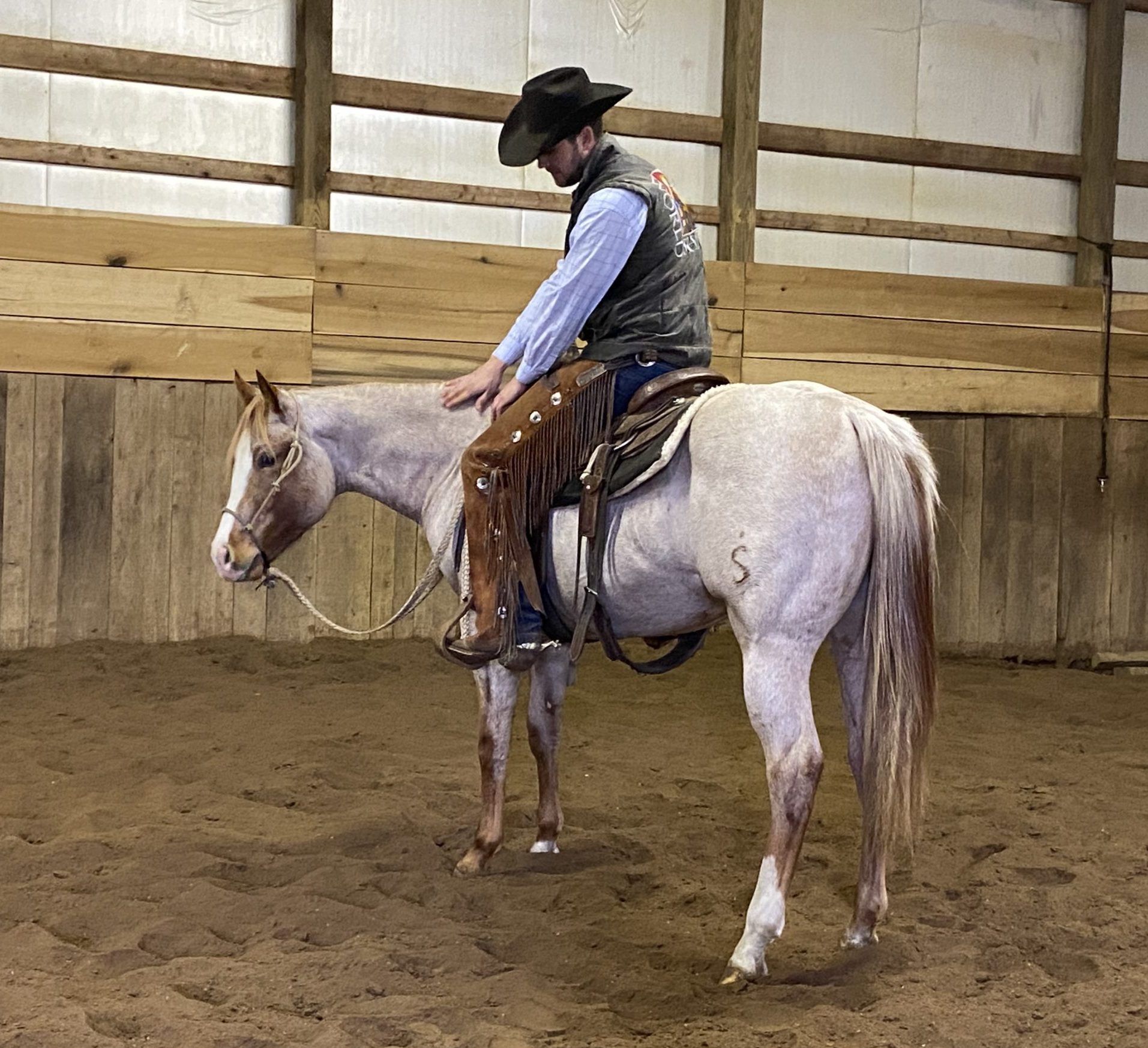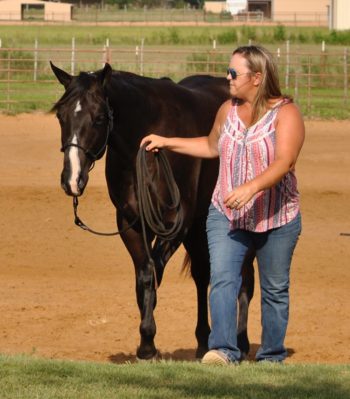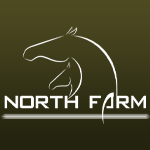It’s no secret, owners want a horse that is safe, comfortable, and enjoyable to be around, whether it’s on the ground, riding, or both. For that to become a reality, it all begins on the ground where we’re implementing good learning basics that can improve overall performance and safety while under saddle. Ground work is the stepping stone prior to riding, but serves as an indicator of a horse’s readiness for riding.
As the time of year is upon us when many people are starting to prepare for that critical first ride, we spoke to trainers Houston Huff (Houston Huff Performance Horses) and Julie Voge (Voge Quarter Horses) for tips on laying down the fundamentals for a horse to succeed.
Earning Respect
Both Huff and Voge agreed on the importance of earning respect from the very beginning of the training process. Huff stressed the importance of “making sure everything has respect from the get-go.” He says he likes to gauge how they’re going to treat themselves and respect the situation that they’re in. As part of the earning respect process, Huff leaves his horses tied to the wall for a few hours per day to help with their patience, but also to decrease the chances of becoming hurt when the time comes for their first ride.

Voge agrees with Huff in terms of leaving the training prospects tied to the wall, to tires in the arena, or their hot walker. Voge says, “We feel it’s teaching them patience and to relax. This is a part of respecting our space within our program.” This will allow them to become patient and stand quietly, while loaded in a trailer or at a sale while those who are shopping can view them. Also, Voge stated that when they’re tied in their stalls, they will go through and feed everybody, but wait to untie them until it’s time to eat. While some don’t like to wait to eat, they quickly learn that if they have patience, they will get untied to eat. This allows them to learn to respect us as humans and begin to have good manners
Additionally, Huff emphasized the idea of creating a “bubble” around himself as many yearlings will be within your personal space. He says he does a lot of “showmanship” type lessons where he will walk in a circle and stop. He states, “They need to be stopping and taking a step backwards rather than stopping and coming up onto you. This goes into riding as well as they don’t need to be thinking about the next thing. It’s all about getting respect on the ground first.”
Huff believes it’s important to wait when speaking in terms of saddling. He starts with a saddle pad and begins to rub it all over their body to get them used to the feel and idea of having it on their back. He will rub it on their neck, hip, and legs. Traditionally, he waits about a week to saddle until he has earned their respect towards himself and a halter.
Setting Yourself Up for Success
Huff stressed the idea of “believing in waiting for that first ride until whenever they’re ready. I really try to make that first ride successful. That first ride sets you up for a lot of success.” Horses will learn more if they’re comfortable instead of frightened and the majority of it comes from respect and knowing when to give the release. They will learn on their release and if they can understand that, then it’s a success. Overall, the biggest thing is respect as mentioned above and it all starts on the initial fundamentals. Huff says, “If you can get the respect on the ground next to them, then it’s going to be a lot easier on their back too.”
 For their first ride to be successful, Huff puts in a lot of time working on the ground for preparation. For a few days, he will work them in a rope halter with a longe line and a saddle placed on them while being inside a round pen. He uses the longe line to control their head and for them to yield off pressure. He will bring them towards him for a couple of steps and then let them back out. He says, “I’m always applying pressure somewhere, making them yield to it as it sets them up for riding.”
For their first ride to be successful, Huff puts in a lot of time working on the ground for preparation. For a few days, he will work them in a rope halter with a longe line and a saddle placed on them while being inside a round pen. He uses the longe line to control their head and for them to yield off pressure. He will bring them towards him for a couple of steps and then let them back out. He says, “I’m always applying pressure somewhere, making them yield to it as it sets them up for riding.”
Voge works mainly with yearlings in the longe line. She emphasizes their main goal is to make them physically looking good, presenting to their best ability, and showing off their movement. When she starts them, they all get started the same way when learning the basics – moving forward, turning, stopping, and backing. Once comfortable with these basic moves, the final touches are put on for tuning the cues for jogging, loping, and working on the circumference of the circle and the finer features.
While working with them, “they need to respect us and our space,” Voge emphasized. Again, she says that it’s about 90% of what they’re working on after they figure out that they need to respect our space and to understand to give from pressure. Also, Voge highlighted that it’s important for her when they head into their 2-year-old career under saddle that they respect your space and give from pressure. Even if they’re not an ideal mover, she’s witnessed and received input from fellow training professionals that they enjoy having horses in their barn that don’t push or knock someone over, step on someone’s feet, walk ahead, or do other things that may get someone hurt.

Preventing Bad Longing Habits While Young
To prevent leaning and pulling while longing, Voge suggests using a rope halter. A rope halter can be more effective in communicating cues to the horse. It can be much harder for the horse to lean on the halter and ignore pressure. In the end, they will respect you much more than in a traditional, flat halter. Voge says, “We do about 95% of our work in a rope halter.” Others will become dull and lean to the outside of the circle, so Voge noted that they use a lunging headstall to give some leverage and to teach them to not pull to the outside of the circle.
***
Horses are magnificent creatures that provide tranquility and peace to many and not just in terms of riding. Not only can groundwork improve the relationship between the horse and rider, but it can provide a safer, successful experience while under saddle and can aid in an increase of control, confidence, and the connection between horse and rider.








